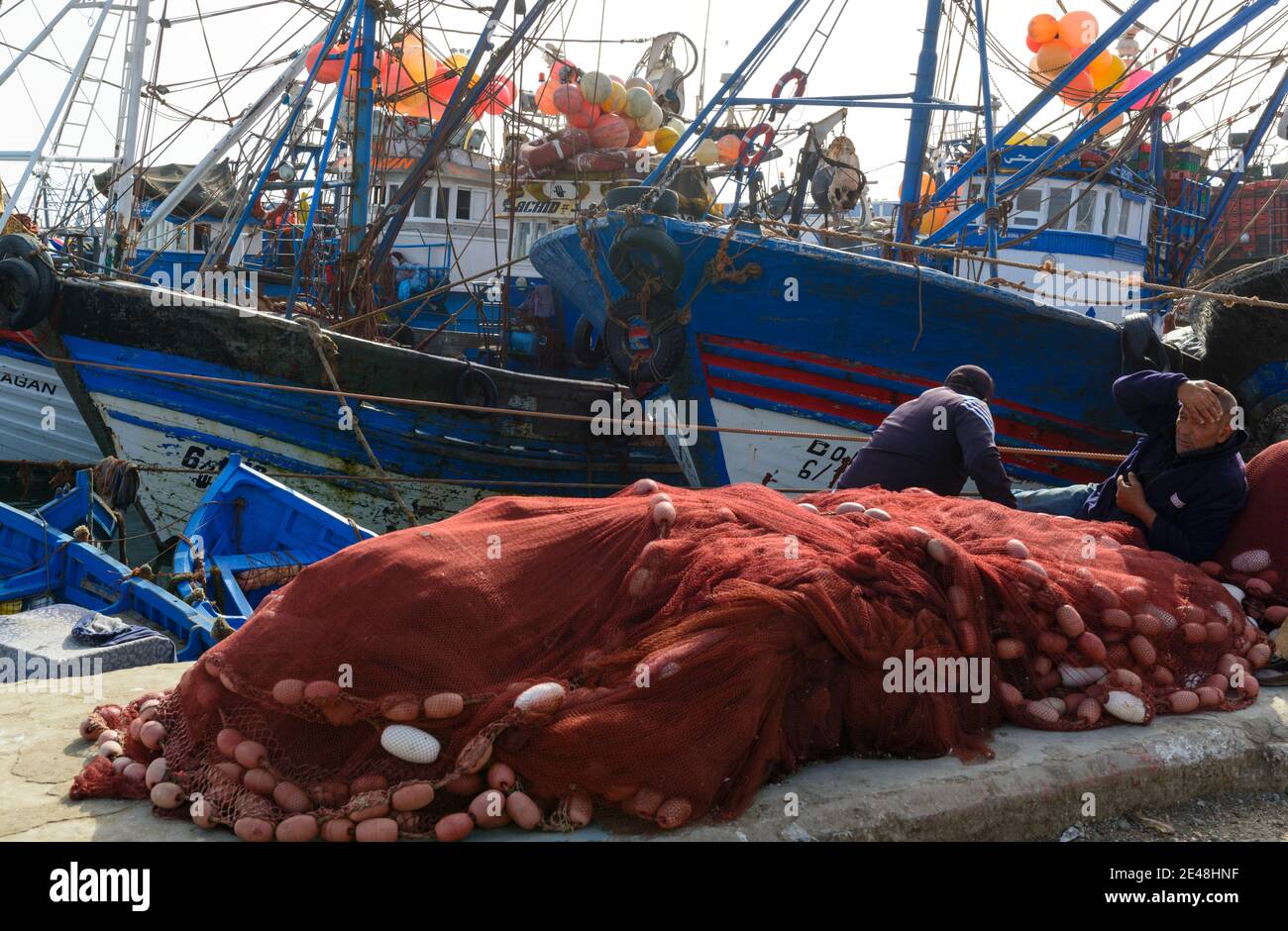Fishermen mending nets in the harbor of Essaouira, Morocco

Image details
Contributor:
Bert de Ruiter / Alamy Stock PhotoImage ID:
2E48HNFFile size:
92.4 MB (3.5 MB Compressed download)Releases:
Model - no | Property - noDo I need a release?Dimensions:
7025 x 4595 px | 59.5 x 38.9 cm | 23.4 x 15.3 inches | 300dpiDate taken:
22 July 2016Location:
Essaouira, MoroccoMore information:
Wikipedia: Essaouira (Arabic: الصويرة; Berber: Taṣṣort or Amegdul; Portuguese: Mogador) is a city in the western Moroccan region of Meṛṛakec-Asfi, on the Atlantic coast. The name of the city is usually spelled Essaouira in Latin script, and الصويرة in Arabic script. Both spellings represent its name in Moroccan Arabic, ṣ-Ṣwiṛa. This is the diminutive (with definite article) of the noun ṣuṛ which means "wall (as round a yard, city), rampart". The pronunciation with pharyngealized /ṣ/ and /ṛ/ is a typically Moroccan development. In Classical Arabic, the noun is sūr (with plain /s/ and /r/), diminutive suwayrah.[4] Hence, the spelling of the name in Arabic script according to the classical pronunciation is السويرة al-Suwayrah (with sīn not ṣād). In the Berber language, which is spoken by a sizeable proportion of the city's inhabitants, it is called "Taṣṣort", meaning 'the small fortress'. In Moroccan Arabic, a single male inhabitant is called ṣwiṛi, plural ṣwiṛiyin, a single female inhabitant is ṣwiṛiya, plural ṣwiṛiyat. In the Berber language, a single male inhabitant is U-Taṣṣort, plural: Ayt Taṣṣoṛt, a single female inhabitant is Ult Taṣṣort, plural Ist Taṣṣort. Until the 1960s, Essaouira was generally known by its Portuguese name, Mogador. This name is probably a corruption of the older Berber name Amegdul أمقدول, which is mentioned by the 11th-century geographer al-Bakrī. Archaeological research shows that Essaouira has been occupied since prehistoric times. The bay at Essaouira is partially sheltered by the island of Mogador, making it a peaceful harbor protected against strong marine winds.Essaouira has long been considered as one of the best anchorages of the Moroccan coast. The Carthaginian navigator Hanno visited in the 5th century BC and established the trading post of Arambys. Around the end of the 1st century BCE or early 1st century CE, the Berber king Juba II established a Tyrian purple factory, processing the murex and purpura shells found in the i